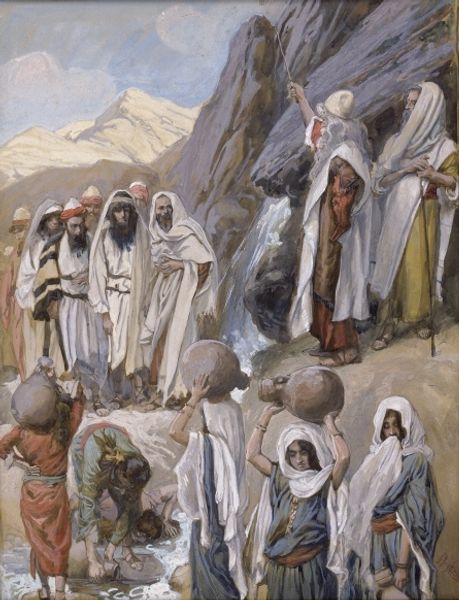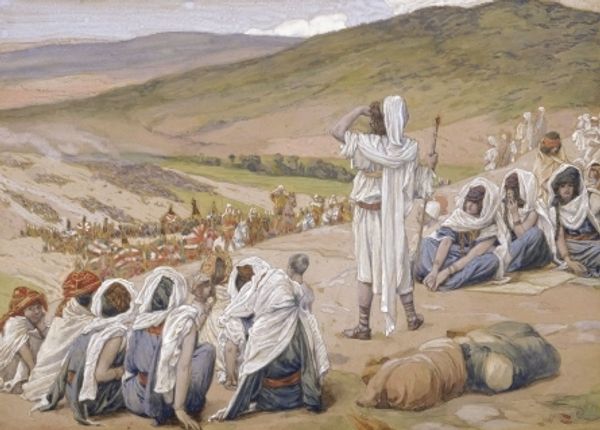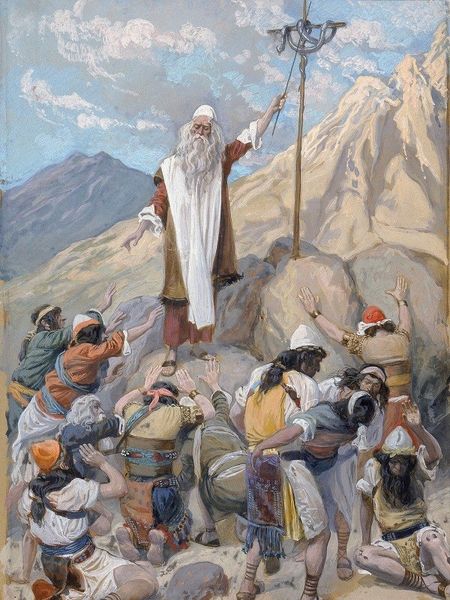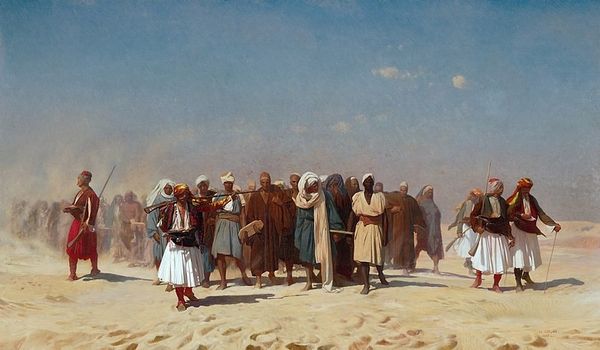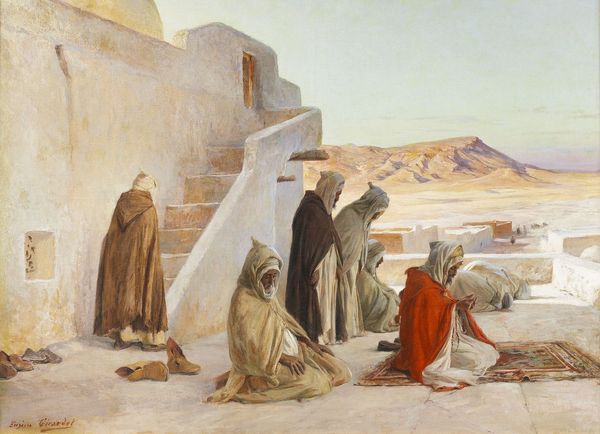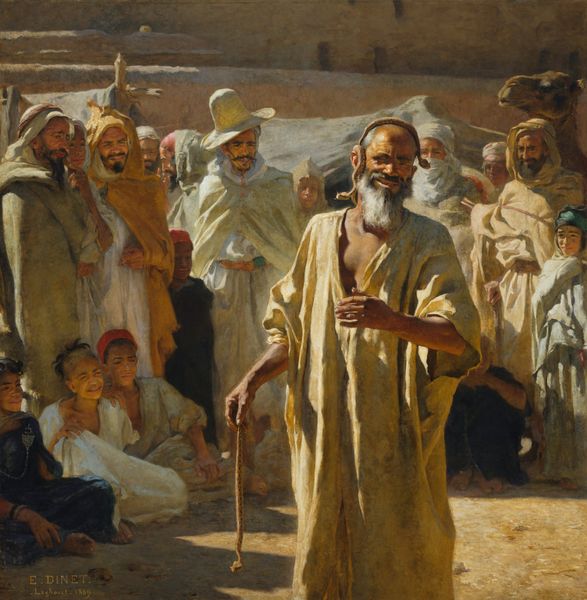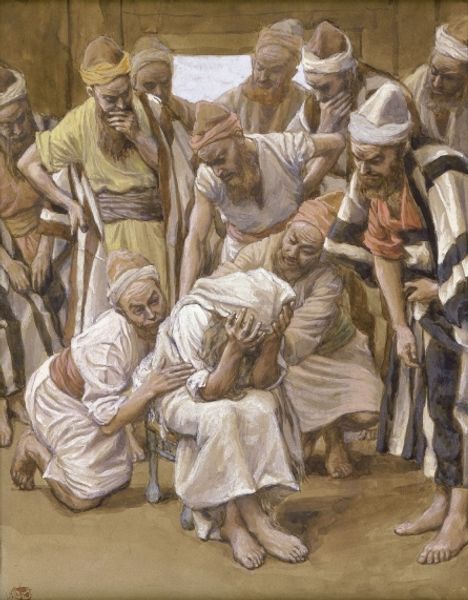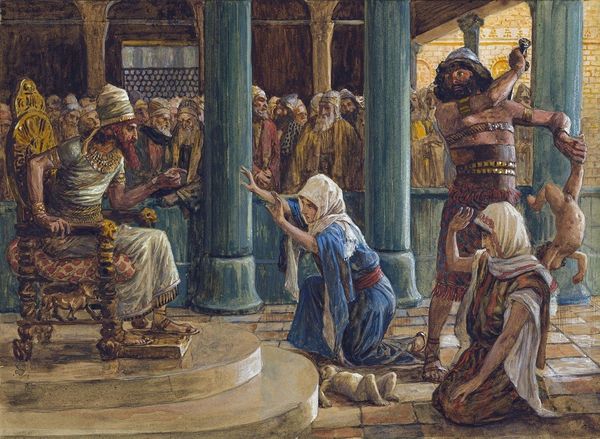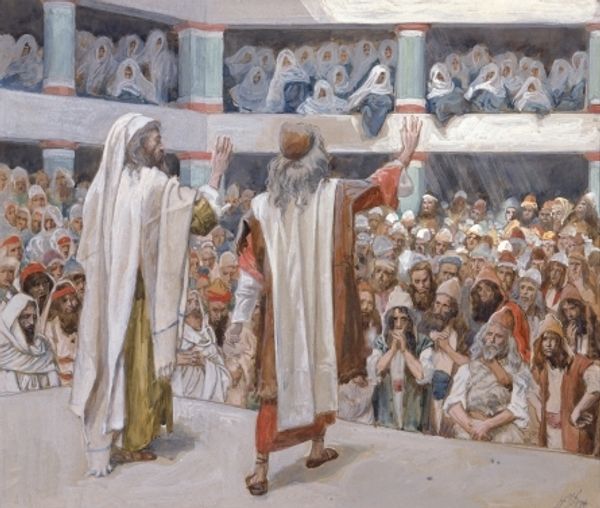
painting, watercolor
#
narrative-art
#
painting
#
landscape
#
charcoal drawing
#
figuration
#
oil painting
#
watercolor
#
portrait drawing
#
history-painting
#
academic-art
#
watercolor
Copyright: Public domain
Editor: James Tissot’s painting "Moses Forbids the People to Follow Him" from 1902, rendered with watercolors, presents a scene of tension and solemnity. The muted colors and the crowded composition create a sense of restrained chaos. What is your interpretation of this work? Curator: Oh, Tissot, ever the storyteller! I see a profound moment of leadership and perhaps even a hint of divine reluctance. The scene feels intentionally claustrophobic, doesn't it? Makes you wonder what 'following him' really meant for those people in 1902, and even more pressingly, for us today. Do you think the subdued palette enhances the somber mood or something else entirely? Editor: I think the colors definitely contribute to the mood. Was Tissot intentionally making a political statement with this painting, considering the social anxieties around the turn of the century? Curator: Well, his works from this period, particularly those illustrating the Hebrew Bible, were deeply personal explorations. The historical context informs his present, much like we try to glean from his. Maybe he saw echoes of societal upheaval or questioned blind faith – aren't we all perpetually oscillating between wanting to be led and desperately forging our own paths? Editor: That’s a compelling point. It makes the scene feel timeless rather than simply historical. Thanks for sharing your insight! Curator: My pleasure! These old stories keep talking, don't they? Always nudging us to reconsider our own narratives.
Comments
No comments
Be the first to comment and join the conversation on the ultimate creative platform.

